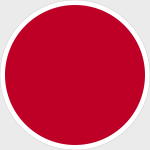Hobby Master HA2006 Imperial Japanese Navy Nakajima B5N2 "Kate" Torpedo Bomber - Aircraft Carrier Soryu, Pearl Harbor, December 1941 (1:72 Scale)
"Tora! Tora! Tora!"
- Predetermined Japanese signal indicating they had achieved complete surprise leading up to the aerial assault at Pearl Harbor, December 7th, 1941
 The Nakajima B5N (Allied reporting name: Kate) was the Imperial Japanese Navy's standard torpedo bomber for the first years of World War II. While the B5N was substantially faster and more capable than its Allied counterparts, the TBD Devastator and Fairey Swordfish, it was close to obsolescence by the time of the Pearl Harbor Attack. Nevertheless, the B5N operated throughout the whole war. Although primarily used as a carrier-based aircraft, it was also used as a land-based bomber on occasions. The B5N had a crew of 3: pilot, navigator/bombardier/observer, and radio operator/gunner.
The Nakajima B5N (Allied reporting name: Kate) was the Imperial Japanese Navy's standard torpedo bomber for the first years of World War II. While the B5N was substantially faster and more capable than its Allied counterparts, the TBD Devastator and Fairey Swordfish, it was close to obsolescence by the time of the Pearl Harbor Attack. Nevertheless, the B5N operated throughout the whole war. Although primarily used as a carrier-based aircraft, it was also used as a land-based bomber on occasions. The B5N had a crew of 3: pilot, navigator/bombardier/observer, and radio operator/gunner.
The B5N was designed by a team led by Katsuji Nakamura in response to a 1935 specification by the Navy for a torpedo bomber to replace the Yokosuka B4Y. Internally designated Type K by Nakajima, it successfully competed with the Mitsubishi B5M for a production contract. The first prototype flew in January 1937 and was ordered into production soon afterwards with the full designation Type 97 Carrier Attack Bomber.
The B5N soon saw combat, first in the Sino-Japanese War, where combat experience revealed several weaknesses in the original B5N1 production model. These were mainly concerned with the lack of protection that the design offered its crew and fuel tanks. Keen to maintain the high performance of the type, the Navy was reluctant to add weight in the form of armour, and instead looked to obtaining a faster version of the aircraft in the hopes of out-running enemy fighters. The B5N2 was given a much more powerful engine, and various modifications were made to streamline it. Although its performance was only marginally better, and its weaknesses remained unremedied, this version replaced the B5N1 in production and service from 1939. It was this version that would be used by the Navy in the attack on Pearl Harbor. Apart from this raid, the greatest successes of the B5N2 were the key roles they played in sinking the US Navy aircraft carriers Yorktown, Lexington and Hornet.
The B5N served as the basis for a follow-on design, the Nakajima B6N, which eventually replaced it in front-line service. The B5N continued to fly in secondary roles, such as training, target towing, and anti-submarine warfare. Some of the aircraft used for this latter purpose were equipped with early radars and magnetic anomaly detectors. B5Ns were also used as bombers during the unsuccessful defense of the Philippines in October 1944.
Pictured here is a 1:72 scale replica of an Imperial Japanese Navy Nakajima B5N2 "Kate" torpedo bomber that was embarked upon the aircraft carrier Soryu, then participating in the raid on Pearl Harbor during December 1941.
Sold Out!
Dimensions:
Wingspan: 8-1/2-inches
Length: 5-3/4-inches
Release Date: June 2010
Historical Account: "The Slayer's Axe" - Shortly before 08:00 on the morning of December 7th, 1941, Japanese aircraft from six fleet carriers struck the Pacific Fleet as it lay in port at Pearl Harbor, and - in the ensuing two attack waves - wrought devastation on the Battle Line and on air and military facilities defending Pearl Harbor.
On board Arizona, the ship's air raid alarm went off about 07:55, and the ship went to general quarters soon thereafter. Shortly after 08:00, a bomb dropped by a high-altitude Kate bomber from the Japanese carrier Kaga hit the side of the #4 turret, glancing off and into the deck below starting a small fire which caused minimal damage.
At 08:06, a bomb from a Hiryu Kate hit between and to starboard of Turrets #1 & 2. The subsequent explosion, which destroyed the forward part of Arizona, was due to the detonation of the ammunition magazine, located in an armored section under the deck. Most experts seem to agree that the bomb could hardly have pierced the armor. Instead, it seems widely accepted that the black powder magazine (used for aircraft catapults) detonated first, igniting the smokeless powder magazine (used for the ship's main armament). A 1944 BUSHIP report suggests that a hatch leading to the black powder magazine was left open, with perhaps inflammable materials stocked nearby. A US Navy historical site history.navy.mil goes as far as to suggest that black powder might have been stockpiled outside of the armored magazine. However, it seems unlikely that a definitive answer to this question might be found. Credit for the hit was officially given to Japanese pilot Tadashi Kusumi. The cataclysmic explosion ripped through the forward part of the ship, touching off fierce fires that burned for two days. (courtesy: Wikipedia)


